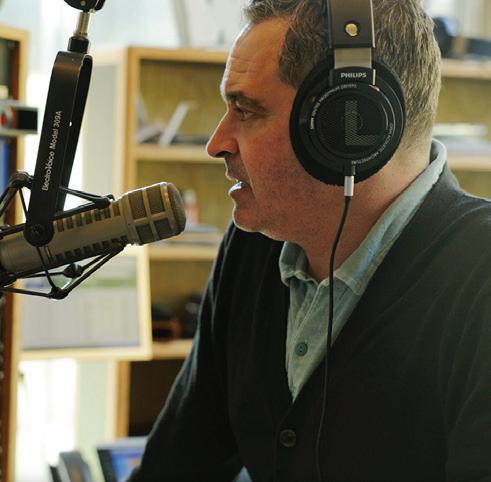






LEANORA MINAI
When I packed up my office in Durham nearly four years ago and drove south down I-95, I didn’t know what to expect. I had lived in Florida before, but this was different. I wasn’t returning to old haunts. I was stepping into the unknown in Orlando, leaving behind the rhythms of campus life, my close-knit team and the in-person interactions that had shaped my work and life in the Triangle area for 17 years.
The move was for my wife Heather’s career, a pivotal opportunity. And I was grateful that my own career at Duke could continue, thanks to a remote-work pilot. I leaned in, embracing video calls and digital collaboration, determined to prove that my commitment to Duke transcended geography.
And yet something was missing.
At first, I attributed it to usual challenges: finding new routines, making friends, learning how to belong in a city that wasn’t quite home. But as time passed, I realized that fully remote work, at least for me, had its limits. I felt lonely. I missed being physically part of something bigger than myself; the structure of a work community, the sense of place that comes with belonging to a community within an institution. I missed the hum of an office, the way conversations spark by cubicles and linger in hallways, the way ideas catch momentum when people share the same space. I missed the texture of campus life: the carillon’s bells across West Campus, the surprise of stumbling upon a free performance or art exhibit and interacting with you.
Orlando gave me so much. Being away felt like going off to college – an experience that stretched me in ways I never expected, pushing me to grow, adapt and rediscover parts of myself I might never have explored had I not taken a risk and embraced change. I served on the boards of the Orange County Historical Society and Orlando chapter of the Florida Public Relations Association. I got bit by the golf bug. I taught a news reporting class at the University of Central Florida and, as a season ticket holder, found a community among fellow fans of the Orlando Pride of the National Women’s Soccer League. But after much reflection, Heather and I have decided to return to Durham. My roots run deep here, and so does my sense of belonging. This isn’t just a return. It’s a homecoming.
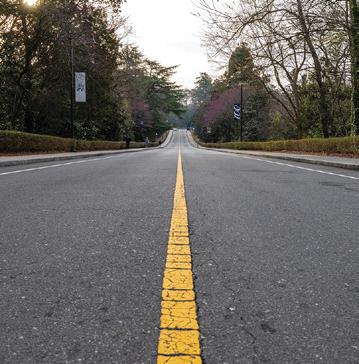


With a record number of Americans turning 65 each day, more employees at Duke are preparing for retirement. Working@Duke asked staff and faculty 55 and older to share their hopes and questions about the future and sought insights from retirees on what to expect.
Since 1985, the DukeCard has been an essential part of campus life, evolving from a simple ID to a digital key for dining, libraries, building access and more. What started as a bold idea is now a mobile must-have, proving that the best innovations stand the test of time.
With Duke’s expanded tuition assistance, more employees are earning degrees and advancing careers. Last year, participation jumped 62%.
Contact us
Leanora Minai
Executive Director of Communications/Editor (919) 681-4533 leanora.minai@duke.edu
Paul S. Grantham
Assistant Vice President (919) 681-4534 paul.grantham@duke.edu
Paul Figuerado Design & Layout paul.figuerado@duke.edu
Stephen Schramm
Senior Writer (919) 684-4639 stephen.schramm@duke.edu
Jodie Valade
Senior Writer (919) 681-9965 jodie.valade@duke.edu
Sonja Likness
Social Media Manager (919) 660-8780 sonja.likness@duke.edu
Travis Stanley Multimedia Producer (919) 684-4262 larry.stanley@duke.edu
Working@Duke is published quarterly by Duke’s Office of Communication Services. We invite your feedback and story ideas. Send email to working@duke.edu or call (919) 681-4533. Visit Working@Duke daily on Duke Today: working.duke.edu


The 23rd season of the Duke Farmers Market will begin April 24 and run every Thursday until Oct. 9.
As in years past, about 15 to 20 vendors and food trucks are expected each week, selling fresh fruits and vegetables and prepared foods from 11 a.m. to 2 p.m. on the Duke Medicine Pavilion Greenway, outside of the Trent Semans Center for Health Education. Some confirmed vendors include Gabor Farms, Lyon Farms, Dojo Fresh and Ouda’s Food.

This year will also include a bonus “Spooktacular” Market on Oct. 30 to celebrate Halloween.
“Our farmers market is a vibrant gathering of local farmers, artisans and small businesses offering fresh, locally grown produce, handmade goods and unique specialty products,” said Brian Zelanko, Health Promotion Program Manager for LIVE FOR LIFE, Duke’s employee wellness program. “It’s not just shopping. It’s a fun, community-focused experience with activities, live music, games, prizes and seasonal surprises.”
For a couple years, Cyndy Keener had to really work to get to the Duke Farmers Market. Her role was stationed out of Hock Plaza, across Erwin Road from the main hub of Duke University Hospital and the site of the market.
But last year, Keener started a position as Pre-licensure Clinical Program Manager for the Duke University School of Nursing – a short stroll from the market.
“I really like to pick out my own fresh produce, and it’s really convenient,” Keener said. “But what I really love is that it’s just a really nice way to get outside, get a little walk and experience that community that exists outside of our immediate walls.”
Learn more about the market at hr.duke.edu/farmersmarket
The spring and summer months are an ideal time to focus on building your professional skills with support from Duke Learning & Organization Development (L&OD).

L&OD will lead 34 professional and technical development courses through July. Among the perennial popular courses are Managing Multiple Priorities (May 22), Personality & Effective Communication (June 11), Self-Leadership (June 25) and Leading Through Generational Differences (July 9).
Also on the schedule are an introductory course on Microsoft Excel (June 10) and a session offering a deep dive into Microsoft Teams (July 22).
"In the summer, when things tend to slow down, it's a fantastic opportunity for personal growth," said Keisha Williams, Assistant Vice President for L&OD. "This is the perfect time to dive into those topics you've always wanted to explore but couldn't fit into your busy schedule. Embrace this chance to learn and grow."
For a complete list of L&OD’s 2025 courses, visit hr.duke.edu/training
As its second century begins, Duke University has launched the “Made for This” philanthropic campaign.
Unveiled in February, the campaign will engage Duke’s global community of alumni and friends to help it accelerate progress in areas where it feels it can make a difference. The campaign aims to help Duke extend the value and impact of its work in health, climate, the student experience, and science and technology.

“I believe our role is to foster the creativity and imagination needed to improve the human condition in myriad ways,” said Duke University Provost Alec Gallimore. “And that’s where philanthropy comes in – the ability to go to donors and say we are going to do something so magical that only your involvement can accelerate it.”
For more on the campaign and how you can contribute, visit madeforthis.duke.edu
Business leader, Blue Devil and Basketball Hall of Fame inductee Grant Hill will be this year’s commencement speaker on May 11 at Brooks Field at Wallace Wade Stadium.
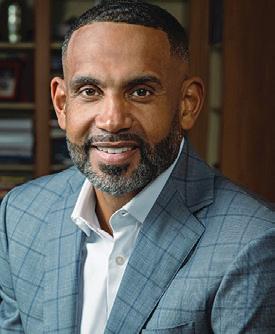
The 1994 Duke graduate was a three-time All-American and helped the Blue Devils win two NCAA titles. He played 18 seasons in the NBA, earning seven All-Star appearances and a spot in the Naismith Basketball Hall of Fame.
After his basketball career, Hill founded a real estate investment firm, worked as a television analyst for CBS and Turner Sports, served as Managing Director for USA Basketball, became a part-owner of the NBA’s Atlanta Hawks, and joined Duke’s Board of Trustees.
“He is an extraordinary leader who has excelled in athletics, broadcasting and business,” said Duke University President Vincent E. Price. “I’m confident that his perspectives and insights will inspire and motivate our graduates as they celebrate their achievements at Duke and embark on the next phase of their lives.”
Learn more at commencement.duke.edu
Duke University Libraries now offers free online access to The New York Times and The Atlantic to Duke staff, faculty and students.
The New York Times all-access subscription includes everything the site offers – including games (Wordle, Spelling Bee and Crossword), Cooking, Wirecutter, The Athletic and more than 20 newsletters.

“The library is here to provide people access to information, and this is a great way to be able to provide that,” Librarian Arianne Hartsell-Gundy said. “And we're also thrilled to be able to give people more opportunities to read and have access to different viewpoints.”
Staff and faculty also have access to The Wall Street Journal online through the Ford Library at the Fuqua School of Business and Goodson Law Library.
For more information on how to sign up for accounts, visit duke.is/LibraryAccess
Whether it’s financial stability, or a sense of purpose, staff and faculty are shaping their next chapter
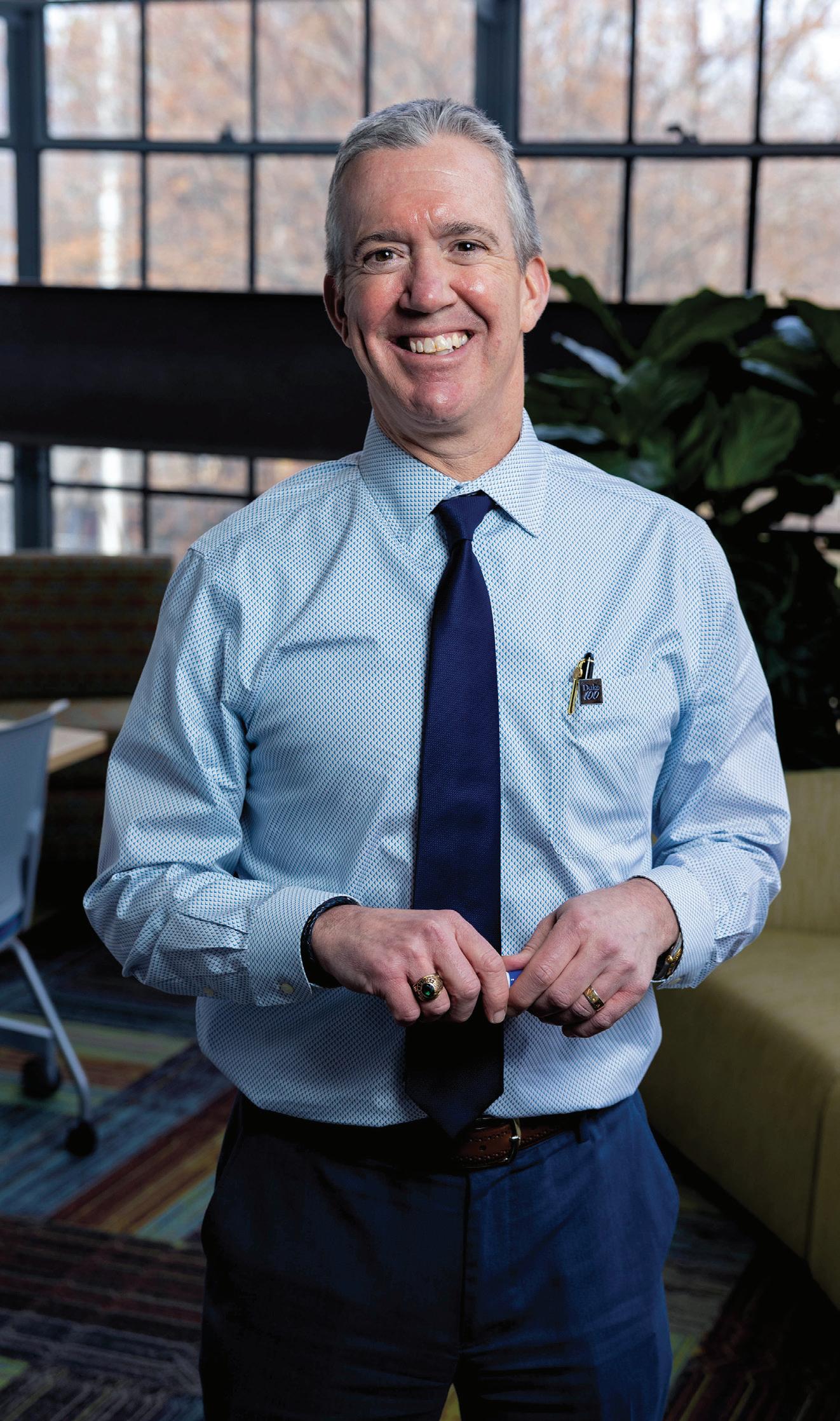
Every so often, Todd Blandford gets to share lunch near Duke’s campus with his now-retired former colleagues.
Blandford, who has worked at Duke for 25 years, enjoys hearing about their grandchildren, travel adventures and how Sunday afternoons are free from Monday-related worries.
“Every time I see any of them … they all look so happy,” said Blandford, Director of Alumni & Development Systems for the Office of Information Technology. “So, I know that retirement must be as good as everyone says that it is.”
Blandford, 56, who has about five or so more years before he retires, is already planning a fulfilling path with inspiration from former colleagues.
He’s worked with Fidelity advisers managing Duke’s retirement plan, who have assured him he’s on track. In retirement, he’s considering volunteering to teach math or computer coding to high school or community college students. He and his wife, Maureen, also hope to travel to destinations like Spain, Greece and Japan.
“Every day that I get closer to that retirement window, the realization that it’s coming, and that I need to make sure I have planned accordingly, becomes more real,” Blandford said.
The reality of retirement is hitting many at Duke University and Duke University Health System, where 12,708 full-time staff and faculty are currently between the ages of 55 and the traditional retirement age of 65.
Across the country, more Americans are reaching 65 than ever before, with an estimated 4.1 million celebrating the milestone last year. This trend – often called the “silver tsunami” – sees 10,000 people turning 65 each day and is expected to continue through 2030. As a result, more employees at Duke and beyond are preparing to transition from their careers into the next chapter of their lives.
Some look forward to playing with grandchildren, traveling with loved ones, devoting more time to hobbies such as painting or gardening or giving back through volunteer work. Others envision starting new journeys guided by professional passions. And for some, uncertainties about purpose or financial security make retirement plans less clear.
“We have resources in place so that everyone at Duke can prepare for their future,” said Antwan Lofton, Vice President for Duke Human Resources. “Whether it’s our retirement savings plans, the financial wellness seminars that we offer, or help from Fidelity, we ensure that people are prepared for the day when they are ready to pass their work on to the next generation and move into the kind of retirement they want.”
To explore retirement, Working@Duke asked staff and faculty age 55 and older to share their hopes and questions about the future. We also gathered insights from retirees on what to expect.
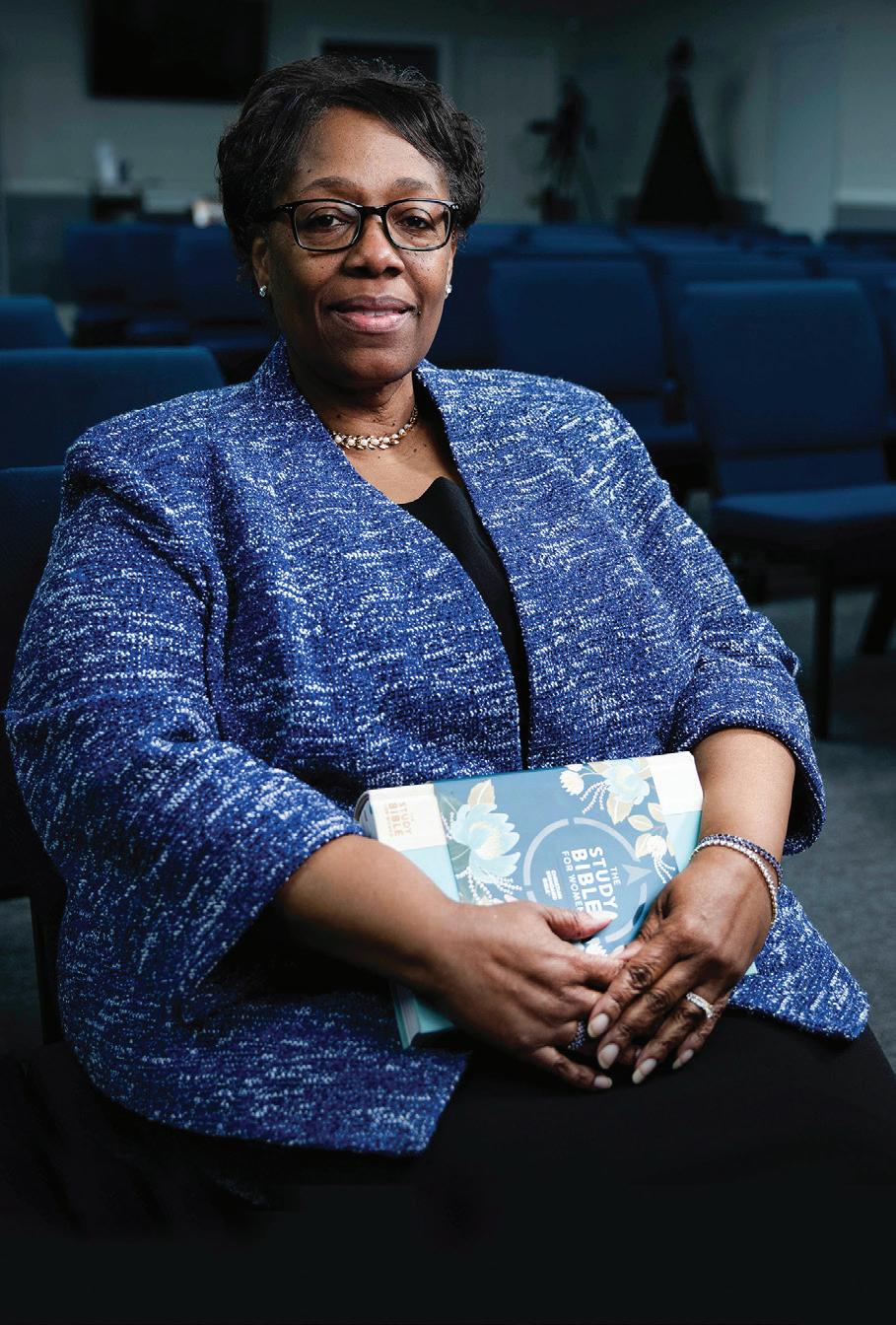

For years, Toni Pierce set a clear goal: retire at 57. If Truls Ostbye had his druthers, he might work until he’s 90.
Both feel confident in their savings through Duke’s retirement plans – Pierce with Duke’s Employees’ Retirement Plan, and Ostbye with the 403(b) Duke Staff and Faculty Retirement Plan.
Pierce, who will complete 35 years at Duke this year, plans to retire this spring from her role as an Administrative Specialist for the Chief Nursing Officer at Duke University Hospital.
She’s eager to follow her passion of serving others at her church, volunteering in the community and spending time with family. She’ll begin taking payments from her retirement plan, a traditional pension that provides hourly and biweekly employees with a guaranteed monthly income at retirement.
“A lot of companies don’t offer pensions to their employees anymore,” Pierce said. “It’s a wonderful benefit and blessing to have.”
Since joining Duke in 2000 as a Professor of Family Medicine and Community Health specializing in epidemiology, Ostbye has consistently contributed to his 403(b) Duke Staff and Faculty Retirement Plan. His savings have also been boosted by Duke’s automatic contributions for eligible salaried employees paid monthly.
If he remains healthy, Ostbye wouldn’t mind working another 20 years until he’s 90 or so – the age when his two mentors retired.
“I have seen in my mentors that continuing to work in an interesting job at Duke can help you stay healthy and sharp,” Ostbye said.
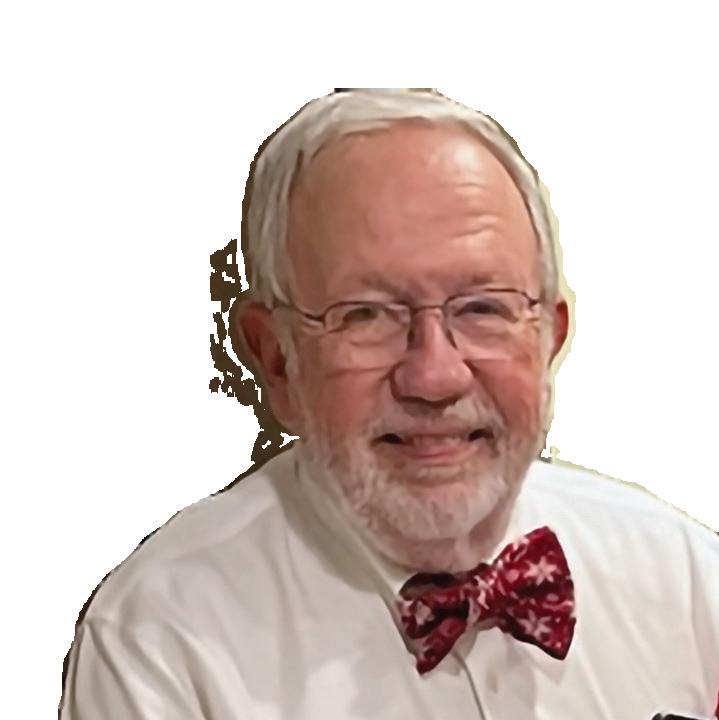
Village retirement community in Durham. He enjoys playing tennis.
“Put as much money as you can afford into Duke’s retirement. When you're a younger employee, the money you put into your retirement account is going to be gaining compound interest for 20 or 30 or even 40 years. When I would get an annual increase, I would often treat it like I didn’t and put that extra money into retirement savings.”


SENTER, 66, Senior Project Manager in Duke Health Technology Solutions, retired in 2020 after 32 years at Duke. Senter has spent time at her beach home with family and enjoys new crafts and exercise and swim classes.
“It’s so important for people to plan ahead. For me, Fidelity was great at helping me understand what I had at Duke and what decisions I could make. I attended retirement information sessions every year offered by Duke Human Resources. Then, I also tell people to go to your local, trusted bank and say, ‘I need to learn more about retirement.’ Really spend time understanding what kind of income sources you’re going to have when you retire.”

Mila Rosario feels like she’s doing all the right things for retirement. She has contributed to a retirement account for years and began adding to her 403(b) plan when she joined Duke as a Medical Records Coder in 2020. She lives frugally and doesn’t spend extravagantly.
Still, with rising costs, she’s not sure her savings will be enough to retire in 11 years.
“The way the economy is, and the direction it’s heading, who can afford to retire at 67 these days?” she said. “Not knowing what the future of retirement will be, I’m trying to keep an open mind.”
Rosario is eager to travel to see family around the world, spend time with her three adult children, and dedicate more of her life to volunteering in her ministry. But she’s open to a part-time job for both mental and financial enrichment.
“I see retirement as an opportunity to try other things and to do more to help others,” she said. “I hope that is what awaits me when and if the time comes for me to retire.”


lives in Sneads Ferry, where he likes to sit on the front porch and watch the boats go by.
“When I retired, I didn’t owe any money. My house was paid for, my car was paid off. If you don’t owe a bunch of credit cards or a house payment or car payment, it doesn’t take that much money to survive. We can do a whole lot more than survive. We can pretty much do anything we want to.”

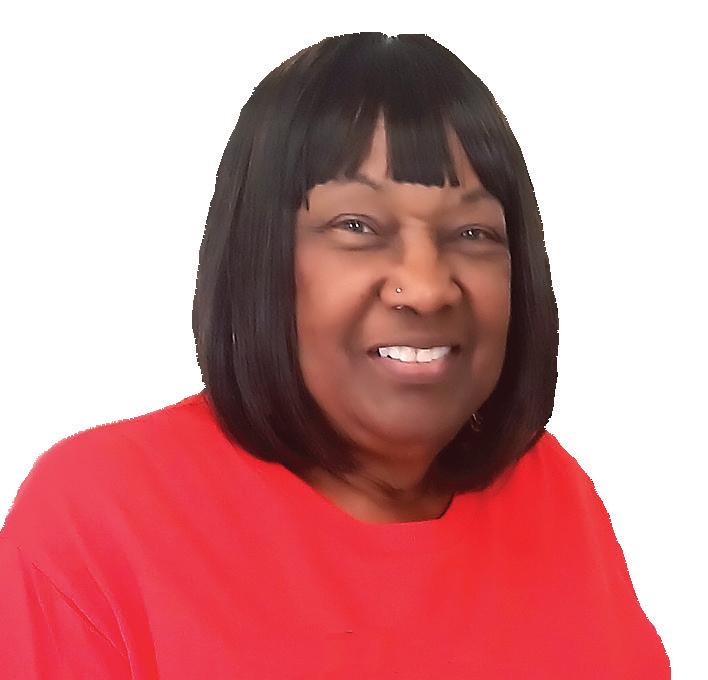
WILLA BONNER, 71, Administrative Assistant for Duke Health Technology Solutions, retired in 2020 after 46 years at Duke. Bonner is active with the Durham Center for Senior Life and volunteers for Duke HomeCare and Hospice.
“Out of those 46 years, I probably aggressively put money in about 15 years before I retired. I should have started 30 years before I retired. But when you’re young, you don’t think about things like that. For most of the time I just kind of looked at my finances and decided what I needed to spend each month and whatever was left over, I put into retirement savings.”

Susan Blackwell is torn. She’s reached an age where many peers she met when she started at Duke in 1989 have retired. But she isn’t quite ready to make that leap, yet.
“Some days I want to retire soon, other days I want to keep working for as long as I can,” she said. “I feel like I still have lots to give to Duke.”
For Blackwell, a Physician Assistant in Oncology and the Duke Cancer Institute, the desire to continue working isn’t about money or ensuring she has a nest egg.
“It's more about still having something to give and still wanting to come in and be with people, help work through problems, solve problems and make things better,” said Blackwell, who started working with a financial adviser about 15 years ago.
One factor that could be a tipping point: Blackwell’s husband also works at Duke and is content as a physician in his 70s.
“When he says, ‘OK, this is it,’ I will probably say, ‘OK,’ too,” Blackwell said. “Because then it’ll be more of a family choice to spend more time together and see the grandkids.”
>>> continued on page 8
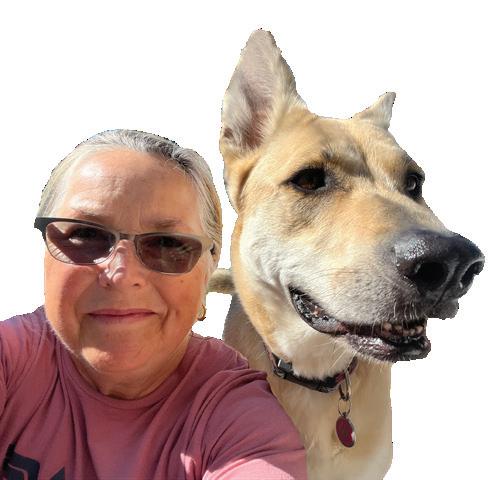
JULIETA GINER, 64, Clinical Research Nurse in Pediatric Infectious Diseases, retired in 2021 after 28 years at Duke. She often travels to visit family across the globe and stays active walking her dogs, going to the gym and socializing with neighbors.
“I'm half Spanish and the Spaniards have three phases of life: The first phase is your infancy and schooling. Your second phase is your productive years, working. And then the third phase is your retirement or senior, elderly years. I remember hearing about that when I was traveling over the years, and I thought that was really a neat way to kind of like split up your life. And I love that they call retirement ‘jubilacion’– that’s really kind of cool.”


, 77, Health Unit Coordinator at Duke University Hospital, retired in 2010 after 41 years at Duke. Webb enjoys volunteering for Morehead Avenue Baptist Church and participating in activities with the Durham Center for Senior Life.
“Just make sure you don’t retire too young. I still talk to a lot of young people at Duke, and I tell them, ‘Don't be going from job to job leaving because some people don't give you that pension for retirement.’ If you leave Duke, you might just have Social Security. A lot of them have thanked me because now they're getting a pension from Duke, and they're getting their Social Security.”

Decades ago, when he was in his early 20s, Vince Guaglione was talking with an older man in his Philadelphia neighborhood about retirement. The man said that his idea of a satisfying retirement would be to build a circle of 30 friends and visit a different one each day.
“For some reason that just stuck with me,” said Guaglione, who is in his 18th year as a Senior Software Developer with Duke Health Technology Solutions. “I’ve always thought that would be a great mantra to have for your retirement because you’d stay connected.”
For Guaglione, who plans to retire in his late 50s or early 60s, staying socially connected is key to his well-being in retirement.
He hopes to maintain friendships made since moving to the Triangle area in 2007. He also plans to stay active with the Raleigh Astronomy Club, where he regularly volunteers, and is open to a part-time job to expand his social circle.
“I like being around people,” Guaglione said. “I like being involved in my community.”

HORTENSE JONES, 74, retired as a Pharmacy Technician Supervisor serving Lincoln Community Health Center in 2016 after 45 years at Duke. She teaches piano lessons, is a member of a flower garden club and started her own business making decorative wreaths.
“Keeping active and looking after your health is the best thing you can do. You’ve got to just keep going. No matter what it is, you’ve got to keep doing the things you enjoy. It’s about staying active, staying informed and taking charge of your life.”

, 66, retired after 19 years at Duke in 2019 as a Practicing Family Physician at Duke Primary Care Hillsborough. She’s found peace of mind through meditation, exercise and playing viola with the Durham Medical Orchestra.
“Self-care has taken a much more prominent role in my life. I wasn’t doing a good job of self-care when I was working. I was really into caring for other people. Caring for myself was kind of tedious. And it still is. … A lot of self-care is about ‘Who am I back to? Who am I going to be?’ Some issues I had set aside in my 20s lingered and needed some attention. Self-acceptance has been essential.”

Throughout her life, Michelle Canfield, a Family Nurse Practitioner at Duke Cancer Center Raleigh, has volunteered in various roles, including serving as an Emergency Medical Technician, leading her son’s Boy Scout troop, and helping the Food Bank of North Carolina by sorting potatoes and packing meals.
“The Food Bank work reminded me of childhood,” said Canfield, who grew up helping on her family’ s farm in northeastern North Carolina. “Living in a farming community, we grew everything. We dug our own potatoes and picked our own okra or whatever was growing at the time.”
While she finds satisfaction helping surgical oncology patients through their preand post-operative care, Canfield is looking forward to retirement, when she can find purpose by volunteering.
Canfield would like to mentor younger nurses or serve as a docent in a small historical museum. When she was in college, she and her friend, a fellow aspiring nurse, said that they wanted to spend part of their retirement volunteering to rock babies in a hospital.
“I just like connecting with people and giving back,” Canfield said. “When you grow up in an area where there were people who didn’t have much, giving back has always meant a lot.”
>>> continued on page 10

JANE O’BRIANT, 69, retired in 2018 as an Accounting Specialist at the Fuqua School of Business after 44 years at Duke. She regularly volunteers at Duke HomeCare & Hospice, where her husband and mother received care before passing away roughly five years ago.
“Volunteering just makes me feel better, especially working with Duke Hospice and knowing that I’m helping a worthy organization, or volunteering with my church family. It’s just important to stay connected to your family, connected with your friends and the people who are important to you. It’s just a good feeling.”

KAREN JEAN HUNT, 68, retired after 15 years at Duke in 2017 as the Librarian for African and African American Studies with Duke University Libraries. Since retiring, she has served with the Peace Corps in Armenia and Ethiopia and volunteered with AmeriCorps in Alaska.
“As a retiree, you can volunteer more than people who have a job. You have more flexibility than somebody who has to go back to work. This can be your purpose. When you retire, the knowledge that you have can still be helpful to people in ways that they may not be able to see right away.”
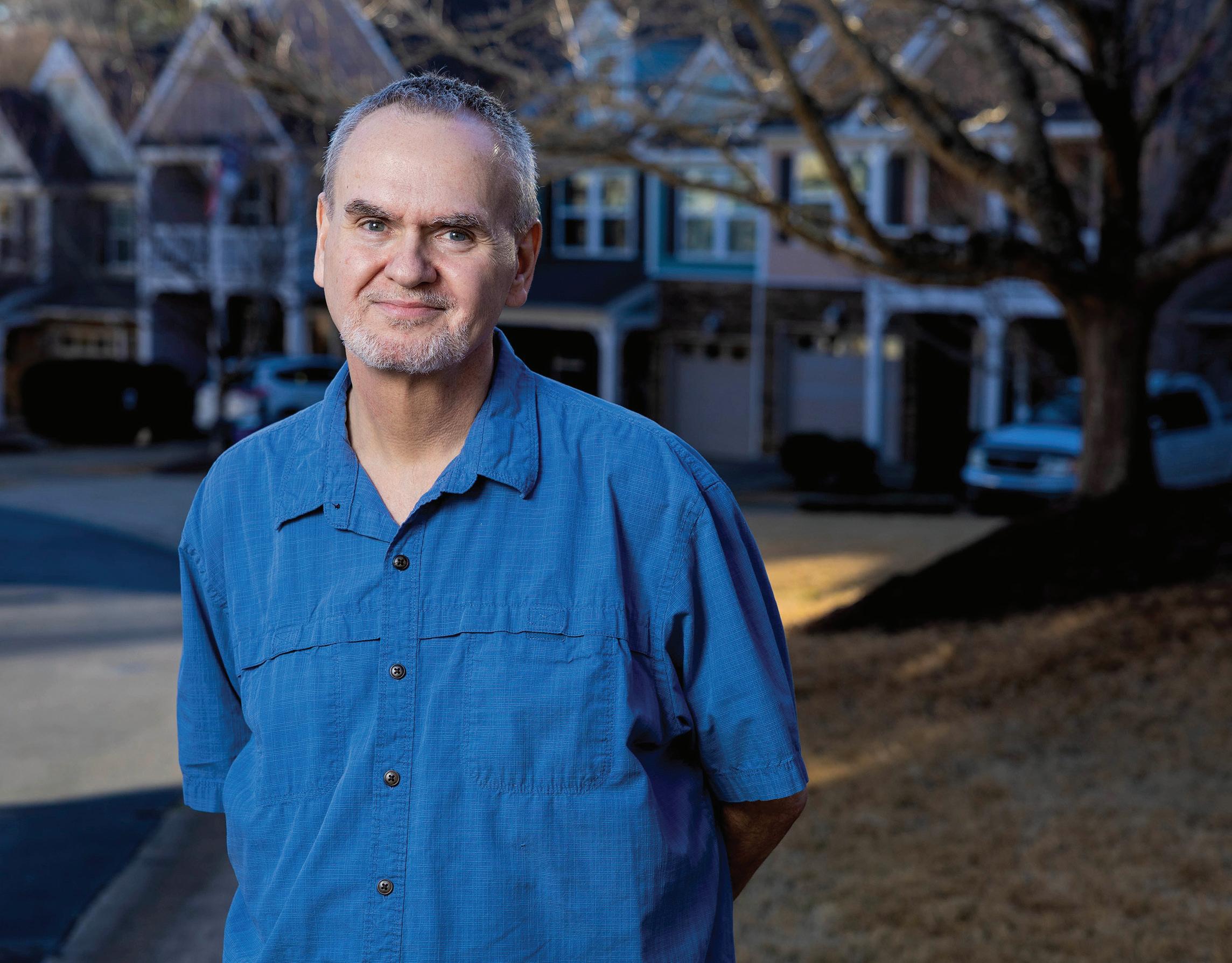
In January, Stuart Carr, a Research Program Leader with Duke Pediatrics, was stuck at his home in Hillsborough recovering from a broken arm. Unable to drive, his days involved quiet afternoons with his husband, Dennis, and their energetic 3-year old poodle, Sophie.
“I was going a little stir crazy.” Carr said. “For me, most of the time, work is not really work. I’m busy doing things, getting things together. I see it as a good thing. I like to keep my mind busy.”
For years, Carr assumed he would retire at 67. But after experiencing a glimpse of retirement, he realized he wanted to find a new pursuit once his time in his current role comes to an end.
What that next act might be hasn’t crystallized yet. He’d love to audit college history courses or find a part-time role contributing to the medical research he’s currently involved in.
“I’m not very good at being bored,” Carr said. “There’s only so much Netflix you can watch or reading you can do. I need to do something a little more complex than that.”
By Stephen Schramm and Jodie Valade
EXTRA: Watch a video and see how Kendall Mincey plans to pursue her painting passion in retirement.



MARSHALL ADESMAN, 76, retired after 21 years at Duke in 2009 as the Assistant to the Executive Director in the Office of Alumni and Development Communications. He authors articles on baseball history and volunteers with The Exchange Place, a historic farm near his home in Kingsport, Tennessee.
“One thing I’ve learned is that, if you get to be retired, and you decide to just sit around, you’re probably going to die early. Your mental health and physical health are going to deteriorate, and you’re not going to be happy. I didn’t want to do that, so I knew I had to stay active. I had to get involved in something.”


PACK, 76, retired after 18 years as a Clinical Nurse at Duke in 2013. In addition to gardening and volunteering with an arts camp, Pack also taught nursing at a community college and serves on the school board in Traverse City, Michigan, where she lives.
“When you’re getting ready to retire, don’t think you’re just going into a lifetime of Saturdays. Think about what’s going to get you up in the morning. I like to garden, so what kind of gardening groups could you get into? Maybe you can start a second career. Think about what you can actively get involved in and how to use your skills in the new freedom retirement may present you.”
DukeCard, also available on mobile devices, remains integral to campus life
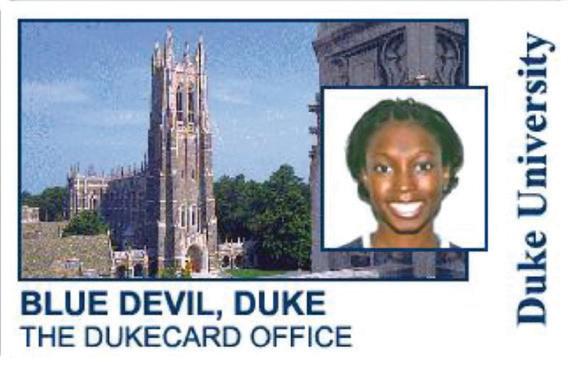


When introduced in 1985, the DukeCard was a first-of-itskind glimpse into the future.
Its magnetic strip and barcode made it a ground-breaking way to pay for meals, enter campus buildings and borrow library books. But with cardholders’ names typed onto paper labels and photos glued to the front –both of which often peeled off – there was clearly plenty of innovation left to do with the ID.
Forty years later, the DukeCard –now available on your mobile device – remains an indispensable and everevolving piece of campus life.
“We’re always looking for what’s next,” DukeCard Director Debbie DeYulia said.
For decades, the 3.25-inch by 2-inch plastic DukeCards have been quietly essential constants for staff, faculty and students. With nearly 70,000 active DukeCards across the university and health system, the DukeCard is also a testament to Duke’s collective creativity.
The DukeCard was the vision of Joseph Pietrantoni, former Duke
Associate Vice President for Auxiliary Services, who retired in 2003 after 33 years at Duke. Using an innovative spirit harnessed in his previous role at GE Aerospace, which developed technology for NASA, Pietrantoni sought creative ways to help Duke function better.
In the early 1980s, Duke’s operational units used disparate systems for identification and payment. That made campus transactions complex for employees and students, who carried separate cards for identification, libraries, dining facilities and entering residence halls.
Pietrantoni saw value in combining all functions on one card, something no university had done before.
“It was a simple solution, one thing that worked with all of these systems,” said Director of Finance for Auxiliary Services Martha Davidson, who has worked with the DukeCard since 1998. “It’s still solving problems today.”
The first DukeCards released in 1985 served as campus IDs, worked with student meal plans, could be used to pay at campus dining facilities and stores,
enter buildings and check out library materials. Later, staff at Duke University Hospital got DukeCards. With its versatile magnetic stripe system, adding more capabilities to the card was simple.
Soon, DukeCards worked with vending and laundry machines, parking readers, athletic event ticketing and even a few local pizza joints.
“People who lost their card would be pretty rattled,” said Duke Law School Staff Specialist Darlene Willis, a DukeCard office staffer from 2004 to 2012. “You couldn’t function without it. Everything was on that card.”
In 2016, new microchips in the card allowed Duke to use wireless readers across campus for building entries and purchases. And in 2018, adding DukeCard capabilities to mobile devices created an even easier way to use Pietrantoni’s pocket-sized game-changer.
“He’d love it,” Davidson said about Pietrantoni, who died in 2017. “Joe always told us to keep things simple, so they’ll keep working for a long, long time.”
By Stephen Schramm
With Duke’s expanded tuition assistance program for employees, participation jumped 62%
Matt Novik never got his bachelor’s degree when he was younger. Instead, he went straight into launching his career. Novik spent years working in communications before starting at Duke in 2020, where he’s now the Graduate Program Coordinator for the Electrical and Computer Engineering Department.
“I sort of gave up on the idea of getting a degree because I had so much work experience it seemed unnecessary,” Novik said.
But then Novik discovered Duke’s Employee Tuition Assistance Program. Suddenly, receiving that degree seemed achievable.
“I sort of felt like I wanted to correct a wrong,” Novik said.
Novik is one of 1,252 employees who used Duke’s tuition assistance benefit in 2023-24 to pursue a degree – a 62% increase in participation after the benefit expanded in 2023. Last year, Duke reimbursed employees $4.4 million for courses, a 78% increase from the previous year.
With the expanded benefit, eligible institutions no longer need to have a physical presence in North Carolina, the service requirement for employees has been reduced from two years to six months of full-time employment, one semester of Ph.D. research is reimbursed, and Watts College of Nursing is among eligible institutions.
“I think it’s phenomenal that when we ensure we’re an employer of choice, we show our commitment to education,” said Antwan Lofton, Vice President of Duke Human Resources. “We’re not limiting someone’s development. We have enlarged the reach of the program so that more people can take advantage of the benefit.”
Novik has been chipping away with classes at Alamance Community College and plans to transfer credits to Appalachian State to earn a bachelor’s in communications. Now 48, he wants to earn his degree before he turns 50.
“My desire to get the degree is twofold,” Novik said. “It’s about satisfying the lifelong goal, but it’s just as much about becoming a more well-rounded and skilled employee.”
Mariah Mawyin has always been fascinated with the human body – how it moves and repairs itself, how it can be fixed. But she decided to be a nurse because she wants to help people.
“I get my happiness out of helping others. It makes me feel like I’m making an impact, and I want to make the biggest impact that I can,” Mawyin said.
It also seemed like a natural transition for Mawyin, 23, who has been at Duke since 2022, working now as a Health Unit Coordinator in the Duke University Hospital cardiothoracic unit. After a friend told her about the Bachelor of Science in Nursing program at Watts College of Nursing, she applied in 2023.
Mawyin said Duke’s tuition reimbursement money – up to $5,250 per year –has helped her afford the $11,000 per semester tuition at Watts when combined with a loan forgiveness program through a partnership between Duke University Health System and Watts.
That’s savings she needs even more, now: Mawyin learned she was pregnant a week before she received her acceptance into Watts, which was established in 1895 in Durham. Her son, Marcel, was born Dec. 8, 2023.


Mawyin juggles a work schedule that includes 12-hour shifts each Saturday and Sunday with classes each Monday through Thursday from 9 a.m. to 5 p.m. with caring for Marcel.
“It’s very hectic,” she said.
But Mawyin says it’s worth it.
“I love my school,” said Mawyin, who expects to graduate in May. “It’s a very small school, and a lot of people don’t know about Watts. But my favorite thing about Watts is the exposure to everywhere at Duke. If you want to work at Duke, it’s a super-easy transition.”
Heidi Rowe was excited when she heard about the graduate program in bioethics at The Ohio State University. It seemed like the perfect combination of her interest in both health care and philosophy. Rowe, who has worked at the Duke Cancer Clinic as a Mammography Technologist since 2019, earned a bachelor’s in philosophy from University of North Carolina at Greensboro.
“It marries those two topics together for me,” she said.
Rowe applied for the Ohio State program before the expansion of Duke’s Employee Tuition Assistance Program and was thrilled to be accepted until she learned the benefit did not reimburse classes at institutions without a physical presence in North Carolina.
But then Duke announced in 2023 that it was expanding the program, and Rowe realized her dream degree was possible, again.
“I was very, very grateful and excited about that,” she said.

With Duke’s expansion of the Employee Tuition Assistance Program, Holly Rowe can be reimbursed for classes she takes remotely at Ohio State. Photo by Travis Stanley.
In 2023-24, 106 new institutions were added to Duke’s expanded benefit. The list of places where Duke employees have been reimbursed for classes now includes institutions in every corner of the country –including Gonzaga University, University of Chicago, University of Florida and University of Maine.
Rowe describes herself as “against student loans and debt,” and said she likely would not be pursuing a master’s degree if not for Duke’s benefit. She has been taking about two classes each year at Ohio State virtually since 2023 and hopes to graduate in late 2025.
“I just feel like it opens more doors, and it helps me be more cognizant of practicing ethically in my own field,” Rowe said. “It just opens more doors in general and broadens my mind.”
In fact, there’s only one drawback to getting her graduate degree from Ohio State: her in-laws are from Michigan.
“They love me enough not to hate me for going to their rival,” Rowe said, laughing.
EXTRA: Watch a video and see how you, like Douglass Coleman, can earn a Master of Arts in Liberal Studies degree at Duke while working full time.

By Jodie Valade
2023-24
1,252
Employees reimbursed for classes
4,070
Classes reimbursed
62%
Increase in participation after benefit expansion 106
New institutions added
335
Number of employees reimbursed for classes at University of North Carolina Wilmington, the top school attended
Katelyn MacDonald’s church bell performance blends music, identity and self-expression
Last June, Katelyn MacDonald approached her Duke University Chapel supervisor, Zebulon Highben, to fill him in on something happening in her personal life.
“Um, just so you know, I’m going massively viral,” MacDonald said.
MacDonald, a Staff Specialist at the Chapel, plays the church bells for Duke Memorial United Methodist Church, a Durham church not affiliated with Duke University. At the start of Pride Month, MacDonald wanted to show her support for fellow LGBTQ community members.
So, she rang out Chappell Roan’s “HOT TO GO!” on the majestic bells that echo along West Chapel Hill Street near the Durham Freeway. Roan, a queer musical artist, won Best New Artist at the 2025 Grammys. MacDonald recorded herself playing the song, then went off to choir rehearsal.
A couple hours later, MacDonald’s phone began to go off. Someone in a nearby apartment complex had recorded the ringing and posted it on TikTok – where views already were piling up. Within two hours, the video had 30,000 views. MacDonald posted two behind-the-scenes videos, too.
Nearly a year later, the three TikTok videos have almost a combined 17 million views.
“It feels a little unreal to think that 17 million people have seen and heard me doing something – including Chappell Roan,” MacDonald said of the video that Roan reposted.
For MacDonald, a transgender woman, it was an important moment to express her support for LGBTQ people in a uniquely personal way.
“You can speak to a lot of things through the bells that you can’t necessarily speak to in other ways, but that are heard by a lot of people,” said MacDonald, 34. “I use it as a form of self-expression and as a spiritual discipline.”
Be bold. Be the difference.

MacDonald grew up around both the church, where her mother is a Methodist minister, and music, earning a bachelor’s degree in music with a focus on saxophone. She began attending Duke Divinity School in 2018, and during the pandemic spent time deeply pondering her gender identity. Shortly after she graduated with her master’s degree, she came out as transgender.
She has played the bells at Duke Memorial United Methodist since 2023, and most often plays traditional hymns. But she also enjoys adding more contemporary songs with meaning – on Juneteenth, she played songs by civil rights activist Nina Simone; on Election Day, she played “This Land Is Your Land.”
So, MacDonald playing Chappell Roan on the church bells during Pride Month in June wasn’t unexpected, even if her viral moment of expression was.
“We were all on the sidelines saying, ‘Go Katelyn,’” said Highben, Director of Chapel Music, “because it was just really pretty cool. Most people don’t think of Chappell Roan and church bells in the same sentence, so it was a neat blending of two musical cultures.”
By Jodie Valade
EXTRA: Watch a video with Katelyn MacDonald on the Working@Duke YouTube channel.

Free health coaching empowers staff member to run 5Ks and take charge of wellness
Acouple years ago, Rachel Orr was going through a stressful period and wasn’t feeling good about her overall health and well-being. She wanted to make a change. Remembering how much she once loved running, she thought it might help to get back to that physical activity regularly, but she didn’t know where to start.
Orr, an Assistant Research Practice Manager in the Department of Psychiatry, signed up for health coaching from LIVE FOR LIFE, Duke’s employee wellness program, and was paired with health coach Lisa Martin. The 12-week program is offered at no charge to Duke staff and faculty.
Orr and Martin met weekly and came up with a plan. They started with a small step of researching 5Ks in the area, progressing to signing up for a 5K and eventually setting goals for running lengths and times each week.
“It was really great to have that support, that encouragement, that accountability person,” Orr said. “And it was like talking to a friend about how you’re doing.”

Crafting achievable goals and reaching conclusions as a team is what health coaching is all about, according to Esther Granville, LIVE FOR LIFE Program Manager.
“The definition of a health coach is that they are a partner,” Granville said. “The role of a health coach is to help a person really come to decisions on their own around what it is that they want to do, and help that person break down the change into small pieces that are realistic to achieve over time.”
LIVE FOR LIFE health coaches hold a degree in a health care field such as nursing, dietetics or exercise physiology, so their coaching can encompass a wide range of client goals – everything from improved eating habits and exercise routines to better sleep quality and managing stress.
To get started, participants submit recent biometric data from a doctor’s visit or health assessment that includes blood pressure, cholesterol and fasting blood sugar numbers. An initial meeting lasts about 60 minutes, and subsequent check-ins are 15 to 20 minutes. Most sessions occur on Zoom in a private meeting room with a coach.
Orr found that incorporating a running routine into her life with Martin’s encouragement improved her quality of life. She has graduated to goals that include bettering her 5K times and completing obstacle course races and sees results in improved sleep and stress levels.
“What we really worked out together is that there’s a really positive component between your physical health and your mental health that I think so many people overlook,” Orr said.
Now, through small, weekly goals, Orr feels like her overall health is better than ever.
“Those small steps turn into real and lasting change,” Granville said.

By Jodie Valade


